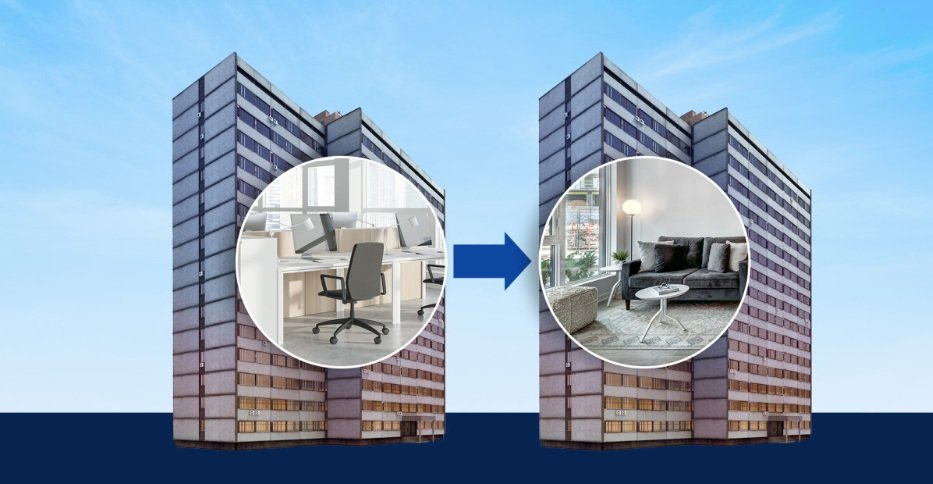The Future of NYC Real Estate Lies in Office-to-Residential Conversions—If the Law Allows It
Towering office skyscrapers, emblems of economic might and business aspirations, have long characterized New York City's skyline. These same structures, however, are now symbols of a shifting era, and their vacancy rates are rising every quarter. The city's professional scene is changing due to remote employment, and once-bustling Midtown office towers are now half-empty.
The obvious solution that policymakers and developers see is to convert unused office buildings into much-needed housing. Additionally, the law is starting to change in their favor for the first time in decades.
Over the next eight years, the New York Post estimates that approximately 19,000 residential apartments will be built from former business space, thanks to new state and local initiatives. This is in addition to the 5,500 apartments that have already been transformed since 2010—a startling figure given how long it takes to build a residential complex from the ground up.
According to Planning Commissioner Dan Garodnick, one of the driving forces behind these modifications is that conversions are "a win-win, helping us through pandemic-related disruptions by creating much-needed housing and putting underused commercial space to better use."
However, there are still a lot of practical and legal obstacles to overcome.
Zoning regulations in New York City were created for a society where residential and commercial areas were kept in completely distinct areas. Other obstacles also exist, even if recent changes, like Mayor Eric Adams' "City of Yes" campaign, have increased the eligibility for conversions to buildings built as recently as 1991 (up from the prior cutoffs of 1961 or 1977).
For instance, many business buildings need to be completely redesigned since they do not have the window coverage required by current construction requirements for residential apartments. In addition, developers have to deal with strict fire safety regulations, HVAC system upgrades, and bathroom redesigns, all of which can drive up project prices.
Despite these challenges, conversions continue to be a desirable substitute for new construction. According to Nathan Berman, who is in charge of five conversion projects with his company Metro Loft, "A typical conversion will cost about one-third less than what it would cost to build from the ground up."
The housing problem in New York City is well known. As rent rates rise and the supply of affordable apartments decreases, many residents find themselves in more difficult positions. Thousands of new developments, including affordable housing units, might be created by converting commercial towers into residential structures without requiring lengthy construction schedules or new site acquisitions.
This change is encouraged by the state's new tax abatement scheme, which mandates that 25% of rental units in buildings that have been renovated be deemed "affordable," meaning that their prices cannot exceed one-third of the median neighborhood income.
However, some developers are still hesitant due to legal uncertainties. Important issues are still up for debate, such as what safeguards tenants will have in converted apartments and if rent stabilization regulations will be applied to these structures, which might have a big effect on financial estimates. Furthermore, zoning regulations are uncertain. Current laws still restrict where and how office buildings can be converted, even if recent changes have increased eligibility for conversions. Financial viability is another important consideration; many projects would find it difficult to proceed without enough tax credits or subsidies.
Several well-known conversions are already changing the market despite these obstacles. A significant change for a once-desired business location will soon occur with the largely empty 5 Times Square office skyscraper being converted into 942 apartments. In the meantime, a 1,600-unit residential project is planned for two old Pfizer buildings next to Grand Central Terminal at 219 & 235 E. 42nd St. by 2027. The 1960s office complex at 111 Wall St., which formerly housed Citigroup, is also being converted into 1,600 rental apartments with expansive views of the harbor. These initiatives demonstrate the economic benefits of repurposing unused

